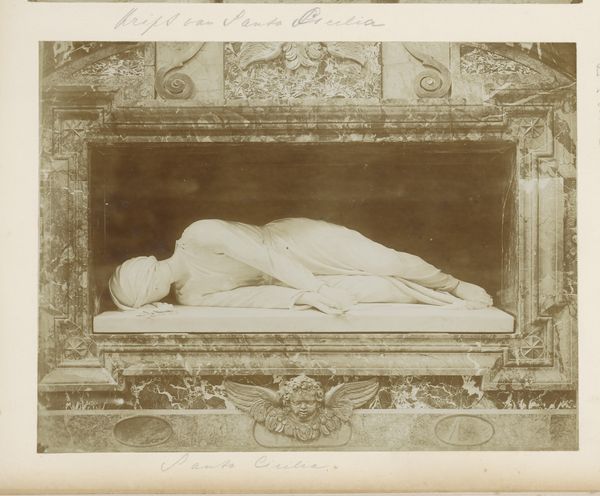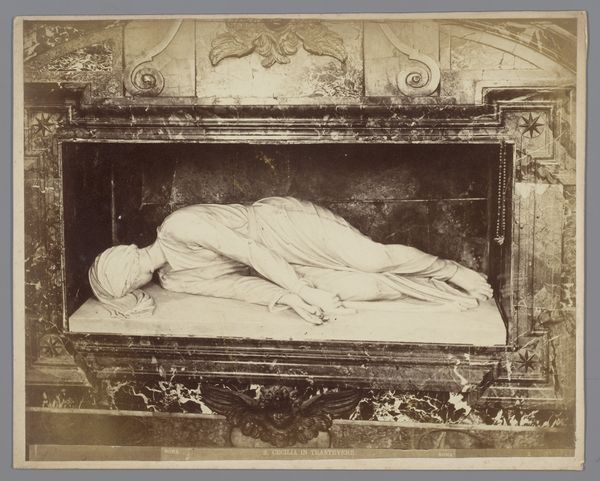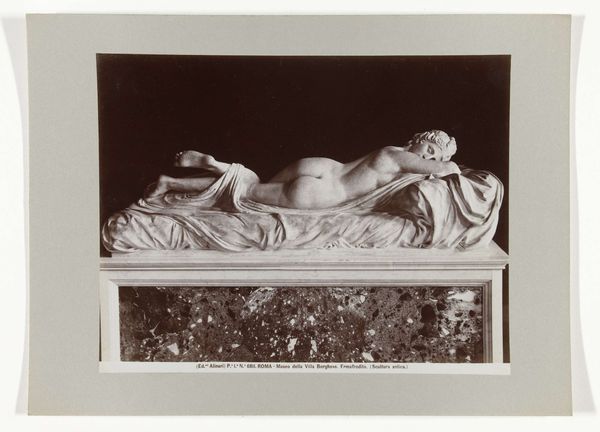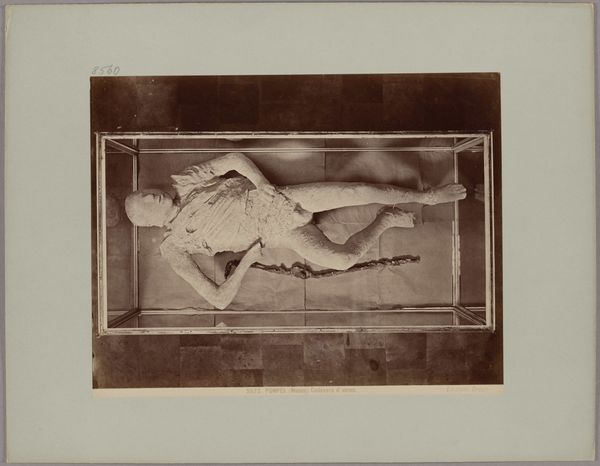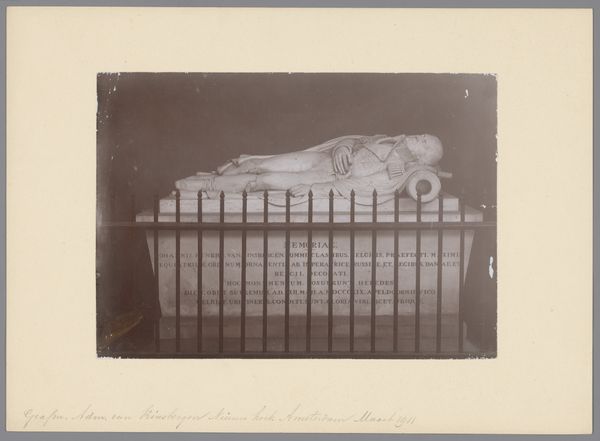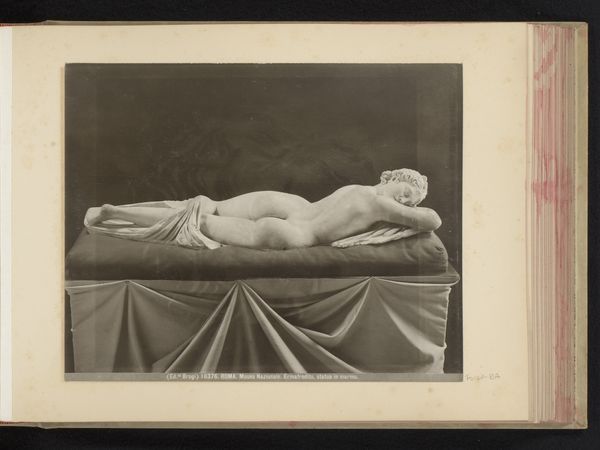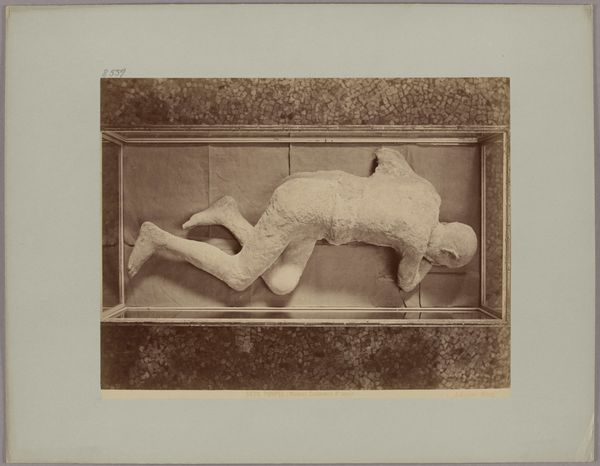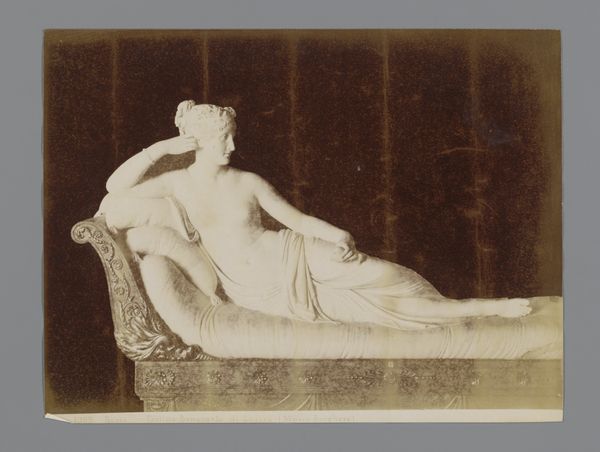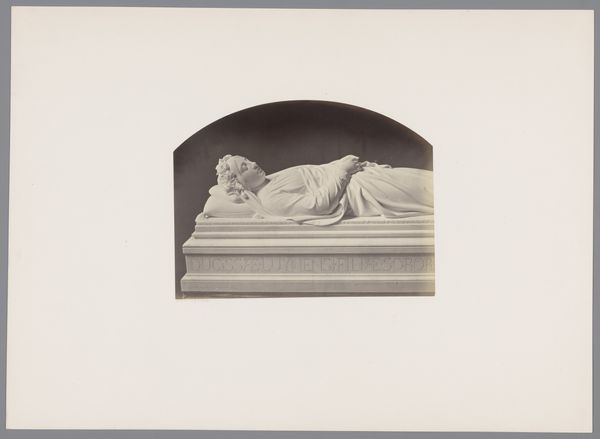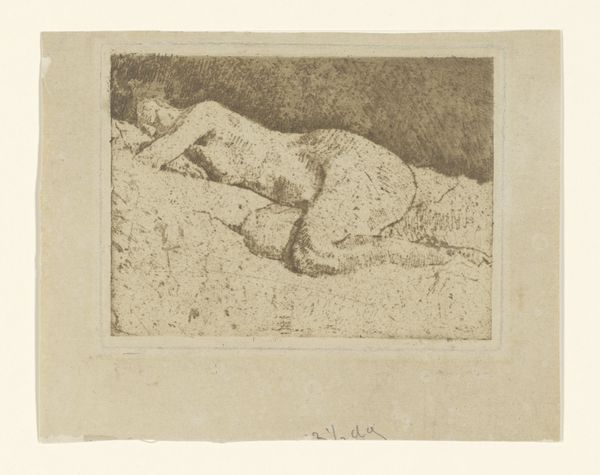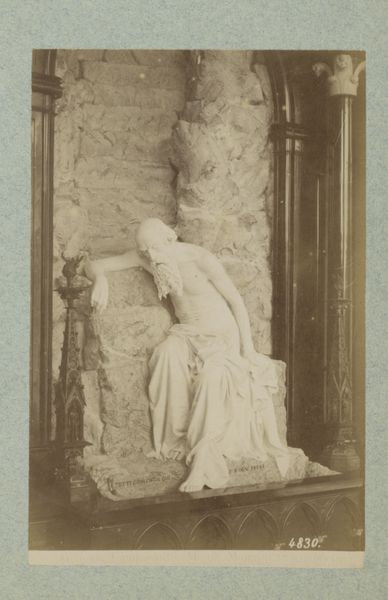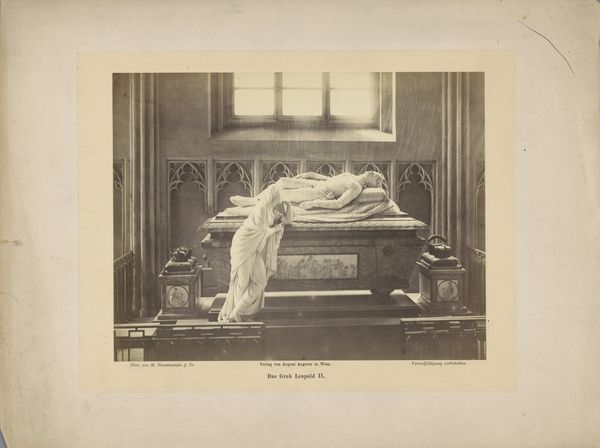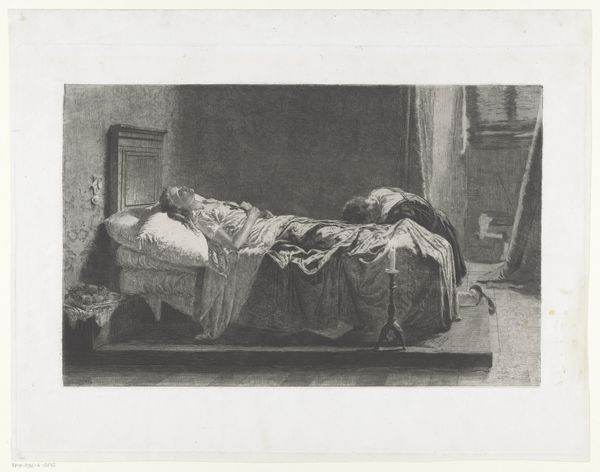
Standbeeld van Sint-Cecilia in de Basiliek van Santa Cecilia in Trastevere te Rome c. 1851 - 1900
0:00
0:00
photography, sculpture, gelatin-silver-print, marble
#
portrait
#
statue
#
still-life-photography
#
figuration
#
photography
#
romanesque
#
sculpture
#
gelatin-silver-print
#
history-painting
#
academic-art
#
marble
Dimensions: height 255 mm, width 355 mm
Copyright: Rijks Museum: Open Domain
Curator: The piece we’re looking at is an albumen silver print dating roughly from 1851 to 1900. The photograph depicts the marble statue of Saint Cecilia in the Basilica of Santa Cecilia in Trastevere, Rome. Editor: It has an incredibly somber tone, doesn't it? The lighting, the subject matter… it evokes a sense of quiet suffering, maybe even resignation. There’s something inherently tragic about capturing sculpture in such a still and photographic medium. Curator: Yes, death permeates. Cecilia, patron saint of music, martyred. The veiled figure suggests modesty but also the silencing of her voice, the silencing of creative expression. That's her powerful symbol—one violently muted. It makes one reflect on silencing as an act of power. Editor: Absolutely. And the way she's posed, lying on her side as if in eternal rest, reminds us that history often remembers those whose voices were stifled by oppressive structures. The body, a site of struggle, now immortalized. What I wonder, too, is how the artist or photographer's gender intersects with our understanding of the pose of complete defenselessness that we find the body displayed in. Curator: In art historical circles, one often encounters the theory that the sculptor's portrayal was linked to contemporary artistic movements and a veneration of sacred, idealized death. There is even the consideration to be made that the statue itself represents a cultural ideal of female piety. I wonder how that intention affects its perception. Editor: I can’t disconnect from our moment and consider just the intention, ignoring effect. I can recognize that such a posture of feminine submission could, even unconsciously, reinforce restrictive societal roles—particularly in a patriarchal religious framework. To deny it reduces an analysis to only an interpretation of intended iconographic symbolism—erasing modern cultural understanding. Curator: The photograph gives a sense of her story’s continuation—it’s more than simple Romanesque aesthetics and recalls shared cultural values around religion. The photograph becomes a part of Saint Cecilia’s iconography and, I argue, serves as a devotional object across time, transformed by light and chemistry. Editor: Light and chemistry but also the socio-political lens through which it all refracted over time! Even in our exchange, Saint Cecilia still inspires reflection and dialogue across temporal gaps. Curator: Indeed—an enduring echo, in image, belief, and reinterpretation.
Comments
No comments
Be the first to comment and join the conversation on the ultimate creative platform.
